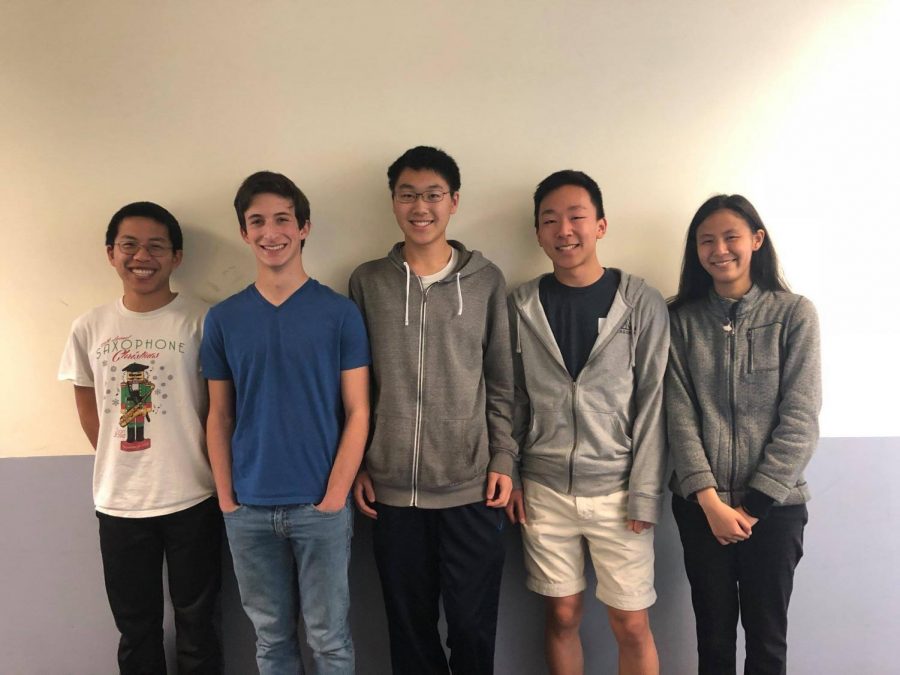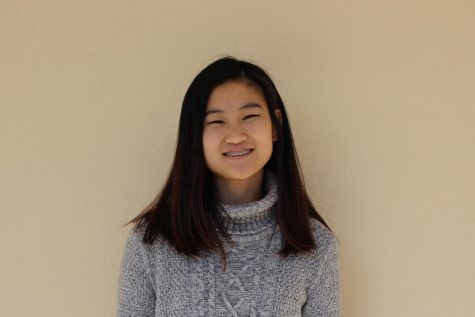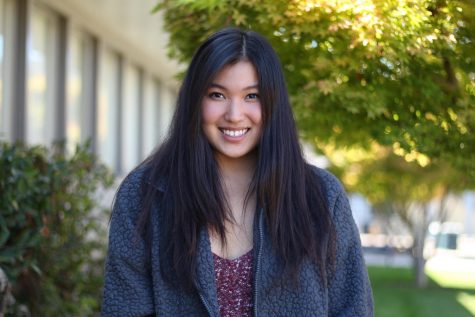Math Modeling Team Advances to New York City
After a year of preparation, they emerged from more than 900 teams to place in the top six.
The math modeling team that qualified as finalists to present their solution in New York City consisted of seniors Ryan Huang, Michael Vronsky, Daniel Wang, Justin Yu and Joanna Yuan. After a year of practice competitions and club meetings, the team improved their synergy and learned to better delegate tasks. Courtesy Carol Evans.
April 24, 2018
Over 14 consecutive hours, a team of five seniors used a combination of statistics and creative thinking to solve a three-part math modeling problem, placing among the top six teams nationwide and winning an all-expense paid trip to New York City to present their solution.
Over 900 teams across the nation competed in this year’s MathWorks Math Modeling Challenge, which asked participants to solve three problems about decreasing food waste through creating models by analyzing data. By placing in the top six teams, one of two Los Altos teams that competed is guaranteed at least $5,000 of scholarship money and has the opportunity to win $20,000 worth of it after they present their solution to judges in New York City.
The problem’s first part asked whether Texas’ population could be fed by reducing food waste in the state. The second part asked teams to model annual food waste for four different types of households. For the final section, teams were to generate the most cost-efficient way to decrease food waste in their communities.
Earning an honorable mention in the same competition last year, the team improved through practice competitions and club meetings, gaining experience working with each other and with the tools they’d need to use to solve the problem. Ryan Huang, Michael Vronsky, Daniel Wang, Justin Yu and Joanne Yuan delegated tasks based on each other’s strengths and weaknesses to streamline their workflow.
“Some members didn’t know each other at all last year, and there was more of an element of teamwork and learning to work together this year,” Math Modeling Club adviser Carol Evans said.
Having only heard about last year’s competition a few weeks before it happened, the team entered this year’s competition more prepared. Instead of working on each part of the problem at the same time as a team, members could work independently, researching or writing as needed. They were also more experienced using tools like Mathematica and Excel, and could create a more formatted paper after having looked at a wider range of old solutions.
“If you go and do your own thing independently while researching, it’s definitely easier to get lost so I feel like two people helps with exploring multiple paths at once,” Ryan said. “I also find myself getting more distracted with fatigue, but having someone to work with you will prompt you to keep focus.”
Although the team had competed in several different competitions, the varied types of questions and lack of solutions made it difficult for them to evaluate how good their paper was. Judge feedback following competitions was also sparse.
“Something I’m looking forward to after our presentation is getting to see what judges think about it and getting more detailed feedback,” Joanne said.
Another problem members faced was fatigue — though they took individual breaks, the longest designated break they had together was a 15-minute lunch break. And even though they had 14 hours to solve the problem, there was a sense of urgency because of the mass amount of data they had to sift through and synthesize.
“It’s just really satisfying at the very end when the 14 hours is over and you look at your paper and be like, ‘Wow, we did this,’” Joanne said.






audrey brouwer | Sep 6, 2018 at 10:54 am
is this an organized club run by parents? if new student is interested, how can they join math modeling team? thanks.audrey